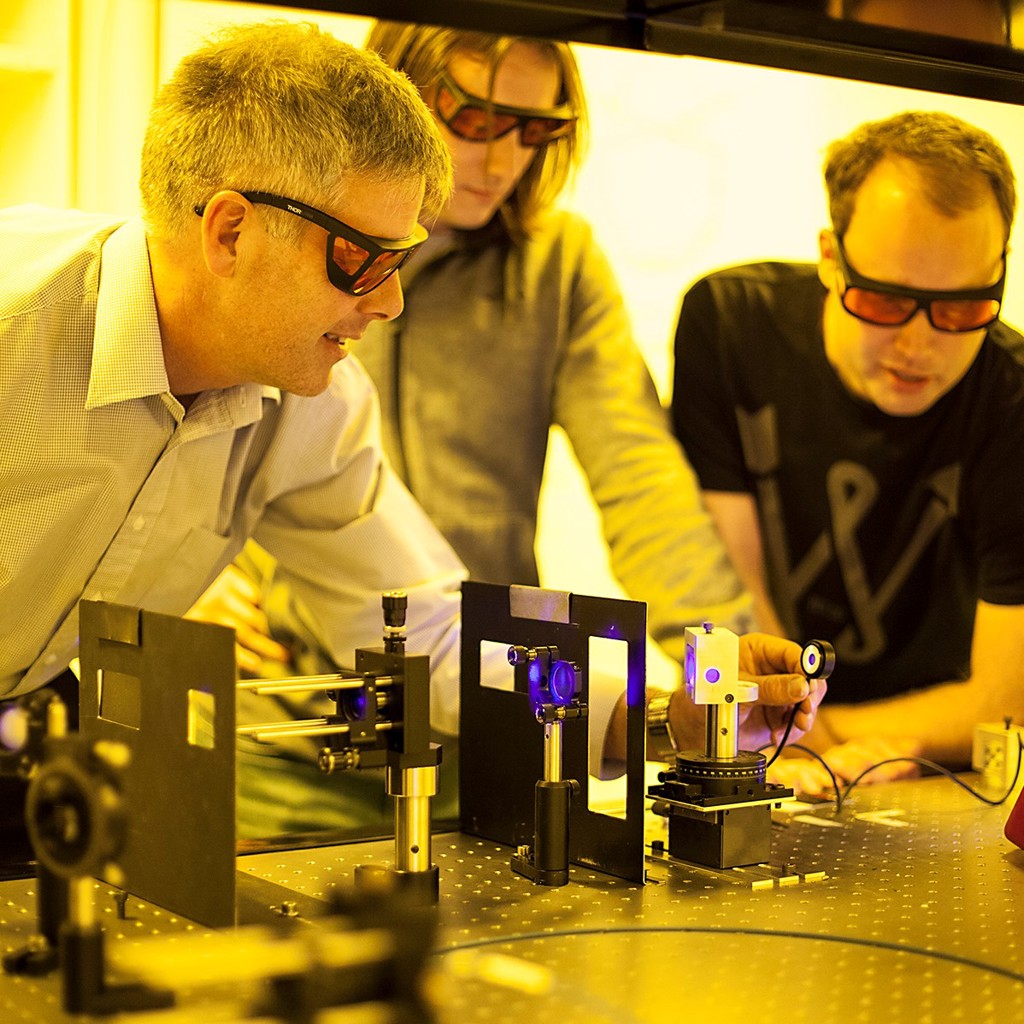Richard Blaikie
University of Otago, New ZealandFor pioneering research in the field of sub-wavelength optics, including the development of evanescent near-field optical nanolithography and a world-first demonstration of sub-diffraction imaging using silver superlenses.

Richard Blaikie comes from a long line of family members interested in science, or more specifically, in land surveying. Because this had been a family profession, Richard was exposed to the various tools and instruments used in surveying during his childhood. Although today’s land surveying tools are fully automated and can connect to GPS systems, historically, this was not the case. Older land surveying tools needed a telescope and a reflector or prism for imaging and returning light pulses to create angle and distance measurements. This was Richard’s first introduction to optics.
Growing up, he was interested in aviation and thought he would be a pilot. In school, he found he had a natural aptitude for mathematics. Then in high school, he had an inspirational physics teacher who piqued his curiosity in the field. A potential career in aviation was set aside and his knack for mathematics and his interest in physics made studying engineering and science a natural path forward.
During his undergraduate studies, Richard took courses in optics which allowed him to complete “interesting and rewarding experiments. It was this experience that inspired him to continue in physics. He received his PhD in semiconductor physics from the University of Cambridge in 1992. When he returned to New Zealand in 1993, he found that his post-doctoral options were limited. Fortunately, he was able to find a position in optics where he could use his undergraduate training. It was at this time that he became an OSA member.
Richard finds OSA membership very valuable, providing numerous opportunities for professional and career development. When he first joined, he was able to attend an OSA topical meeting for quick, on-the-job learning to prepare himself for a post-doctoral position in optics. The meeting provided a baseline for current research and helped him make the right connections in the field. Throughout his career, he has used many OSA Publishing resources and published his most-cited work in Optics Express. In addition to publishing, the society has given him the opportunity to give back to the community by serving as an editor. And, OSA reconnected him with OSA Fellow Ian Hodgkinson who has been a dedicated and inspirational mentor.
Currently, Richard is the Deputy Vice-Chancellor, Research and Enterprise, and Professor in Physics, at the University of Otago in New Zealand. He never thought he would get a PhD or work in academia but now considers himself privileged to be in this position. While he recognizes the importance of international conferences in collaborating with colleagues and keeping up-to-date on the latest research, Richard notes that New Zealand is about as far away as one can get from the rest of the global optics and photonics community. He states that this is not a bad thing as it gives researchers the opportunity to reflect on the international research while also looking at it from a different angle. Because of their geographic isolation, he believes his colleagues in New Zealand have the opportunity to try new things, which is a creative and rewarding process.
To counter distance from collaborators, he uses social media to follow other researchers, such as Fellows John Dudley (CNRS, France) and Ben Eggleton (University of Sydney, Australia), and to keep up with the Student Chapter at the University of Otago.
“Optics excites people,” says Richard. The exciting nature of demonstrations gets people interested in optics and science in general. One of the coolest discoveries, according to Richard, was the demonstration of gravitational waves and the ability of the LIGO team, made up of thousands of members around the world, to detect ripples in the universe and link it to black holes. Another, he says, was Shuji Nakamura’s (University of California Santa Barbara, USA) invention of blue LEDs, which is regarded as a major breakthrough in lighting technology. While the LIGO team had a large number of people working on the project, Nakamura’s invention was a solo effort and shows incredible focus and tenacity. These two discoveries showcase the importance of both individual and team work in optics.
“Find something you’re passionate about and interested in on a daily basis,” Richard says when asked about advice he would give to young scientists, “but also have plans A-Z so that you don’t get too upset if what you have your heart set on doesn’t work out.”
Profile written by Jeanette Gass
